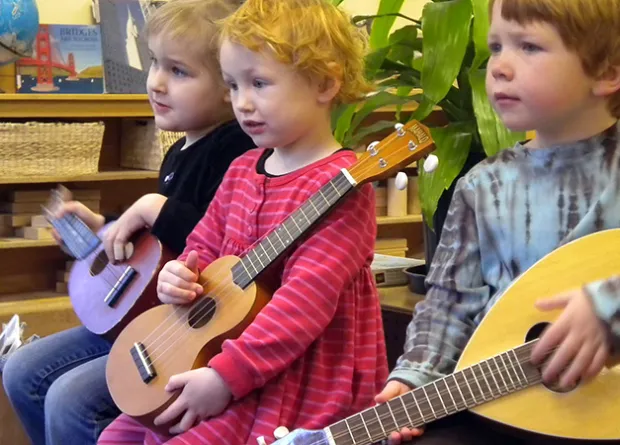Music Program
“Music’s ability to create connections between people means that it is a force for relating well, at the same time, relating well can be a resource for making more music.”
Music at Fort Hill

The Hundred Languages of Children
No way.
The hundred is there.
The child is made of one hundred.
The child has a hundred languages
a hundred hands
a hundred thoughts
a hundred ways of thinking
of playing, of speaking.
A hundred.
Always a hundred
ways of listening
of marveling, of loving
a hundred joys
for singing and understanding
a hundred worlds to discover
a hundred worlds to invent
a hundred worlds to dream.
The child has a hundred languages
(and a hundred hundred hundred more)
but they steal ninety-nine.
The school and the culture
separate the head from the body.
They tell the child to think without hands
to do without head
to listen and not to speak
to understand without joy
to love and to marvel
only at Easter and Christmas.
They tell the child
to discover the world already there
and of the hundred
they steal ninety-nine.
They tell the child that work and play
reality and fantasy
science and imagination
sky and earth
reason and dream
are things
that do not belong together.
And thus they tell the child
that the hundred is not there.
The child says
"No way. The hundred is there."
Loris Malaguzzi (translated by Lella Gandini)